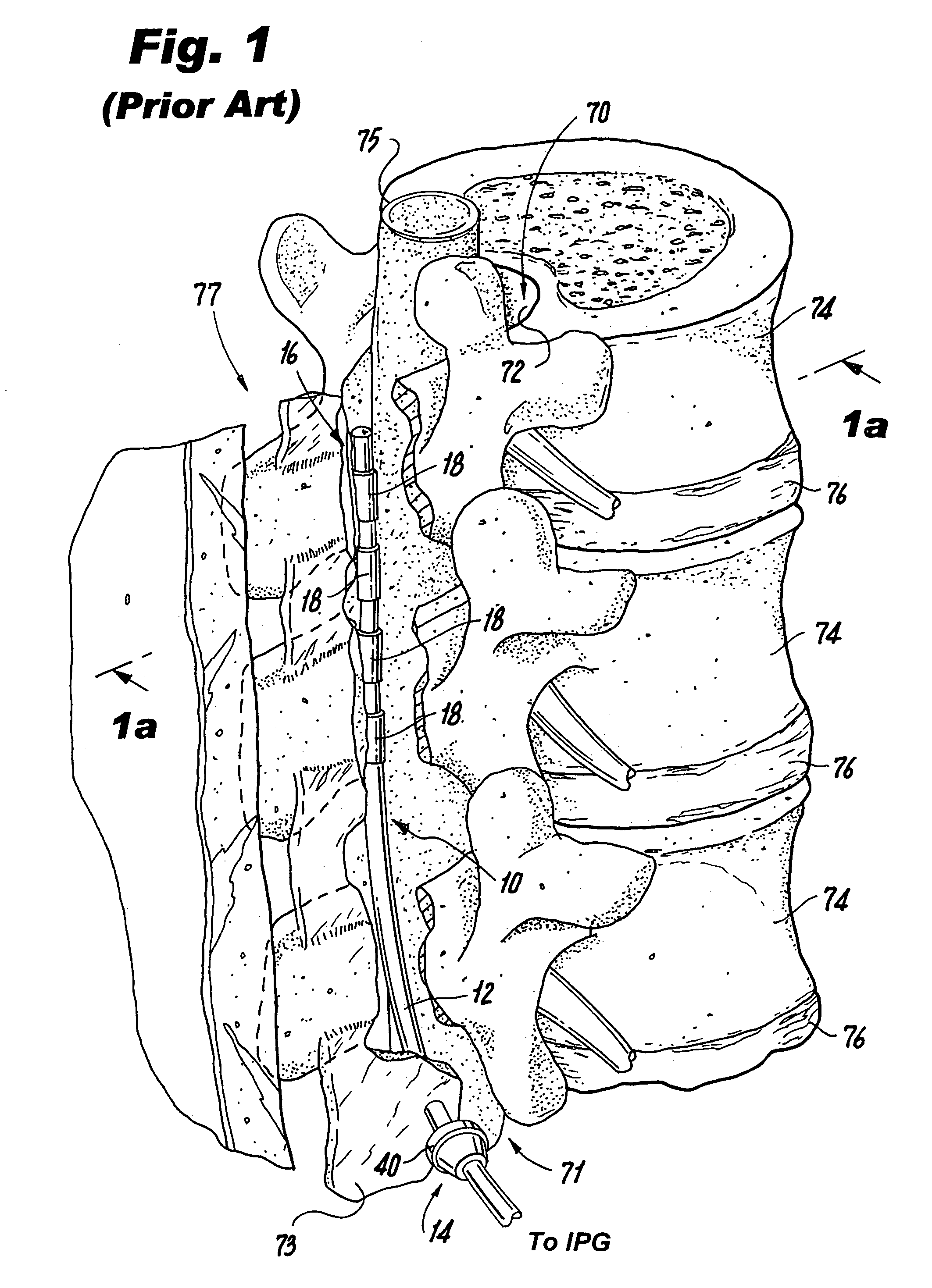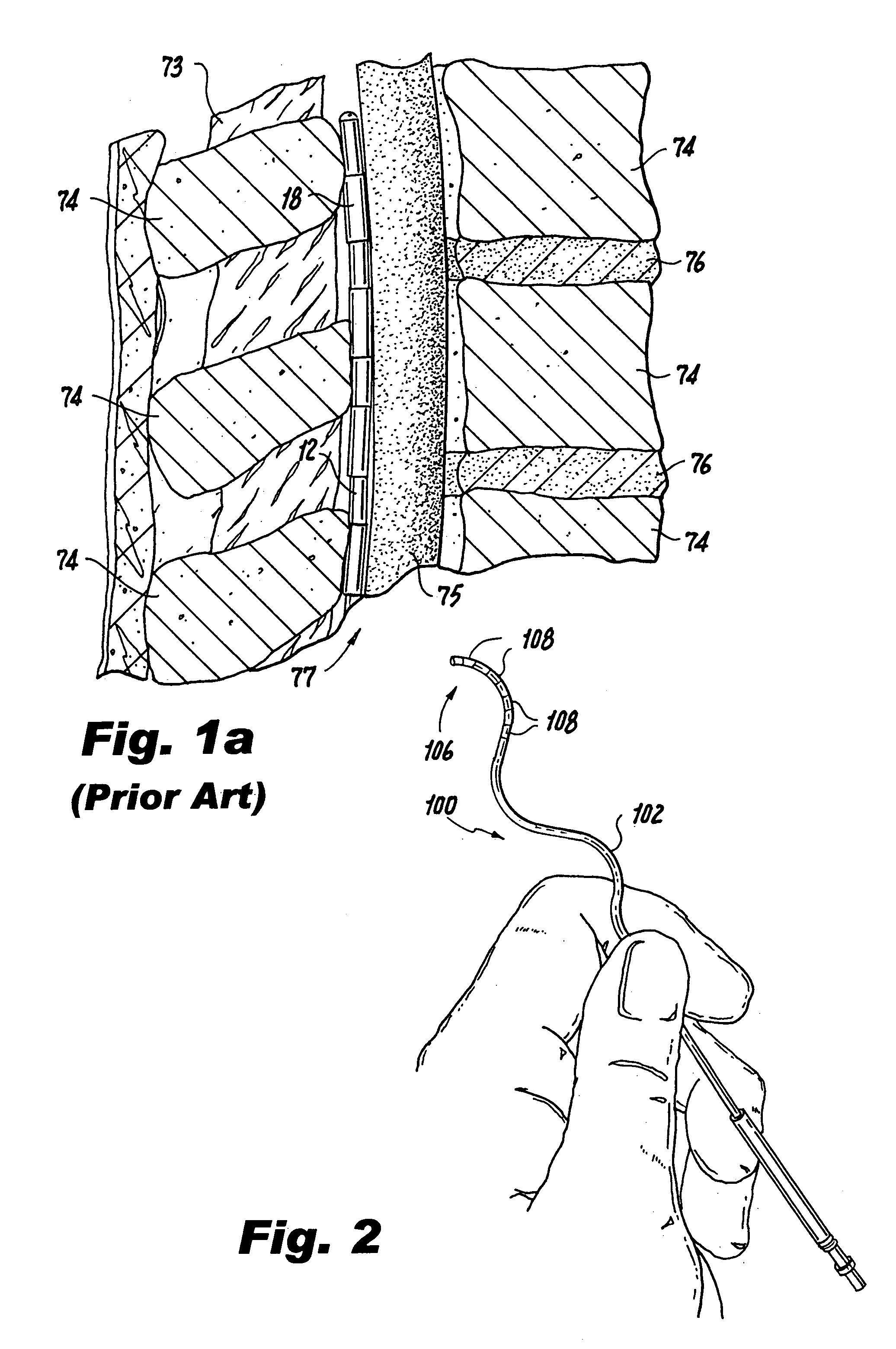Positive fixation percutaneous epidural neurostimulation lead
a neurostimulation lead and positive fixation technology, applied in the direction of internal electrodes, transvascular endocardial electrodes, therapy, etc., can solve the problems of nerve damage, chronic pain, patient sedation, etc., and achieve the effect of effectively inhibiting lead migration and being easily directed
- Summary
- Abstract
- Description
- Claims
- Application Information
AI Technical Summary
Benefits of technology
Problems solved by technology
Method used
Image
Examples
Embodiment Construction
[0036] Referring now to the accompanying drawings, wherein like reference numerals identify similar structural features of the present invention, there is illustrated in FIG. 2 a neurological epidural lead 100 constructed in accordance with the present invention. The lead 100 includes an elongated lead body 102 having opposed proximal 104 and distal 106 end portions. Several electrodes 108 are secured to the distal end portion 106 of the lead body 102. Preferably, the lead includes at least two electrodes, although it is possible to utilize a lead with a single electrode. A connector 110 is secured to the proximal end portion 104 of the lead body 102, and is configured to interface with a pulse generator (not shown). The pulse generator could be an implantable pulse generator (IPG) that is implanted within a patient's body, or could be a device that remains external to a patient's body. In a particular embodiment, the connector 110 is a conventional IS-1 type connector, however, tho...
PUM
 Login to View More
Login to View More Abstract
Description
Claims
Application Information
 Login to View More
Login to View More - R&D
- Intellectual Property
- Life Sciences
- Materials
- Tech Scout
- Unparalleled Data Quality
- Higher Quality Content
- 60% Fewer Hallucinations
Browse by: Latest US Patents, China's latest patents, Technical Efficacy Thesaurus, Application Domain, Technology Topic, Popular Technical Reports.
© 2025 PatSnap. All rights reserved.Legal|Privacy policy|Modern Slavery Act Transparency Statement|Sitemap|About US| Contact US: help@patsnap.com



